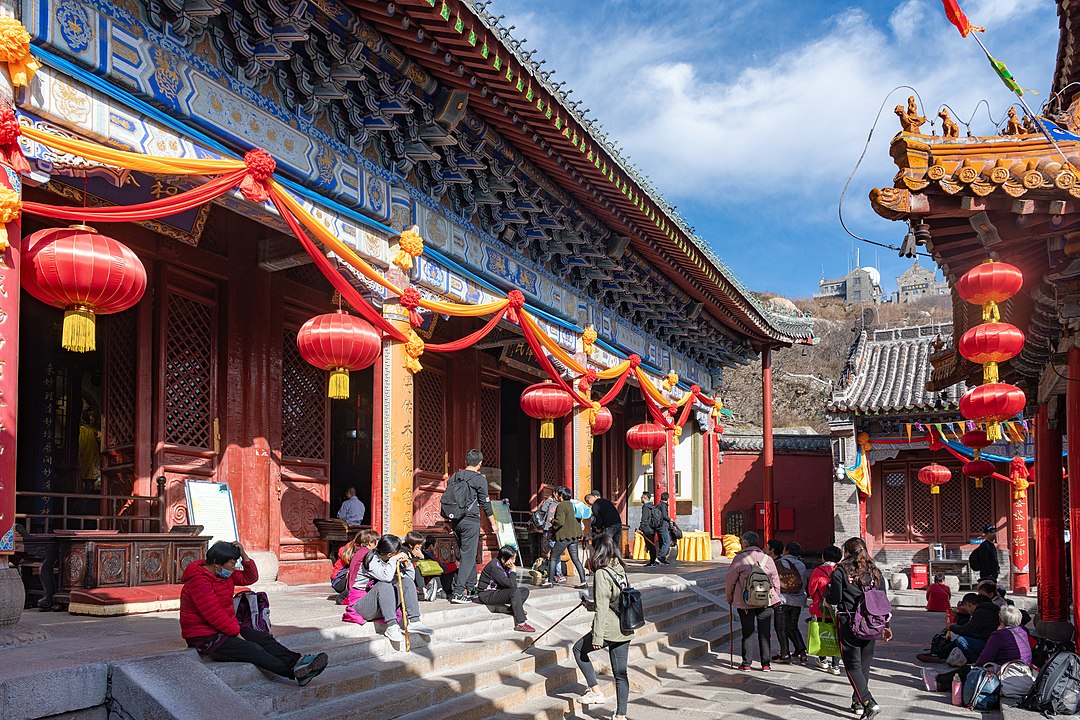Mount Tai, also known as Taishan, stands as a majestic symbol of natural beauty and cultural significance in China. Located in Shandong province, this revered mountain has been a site of worship, pilgrimage, and inspiration for centuries. With its breathtaking peaks, ancient temples, and profound historical significance, Mount Tai invites visitors to embark on a spiritual and awe-inspiring journey. Let’s delve into the unique allure of Mount Tai, where nature’s grandeur meets cultural reverence.
Sacred History and Cultural Significance
Mount Tai holds immense cultural and historical significance in Chinese tradition. As one of the Five Great Mountains of China, it has been a place of worship and pilgrimage for emperors, scholars, and spiritual seekers throughout the ages. The mountain is associated with important philosophical and spiritual beliefs, including the Taoist principles of harmony and balance. Its recognition as a UNESCO World Heritage site further underscores its cultural importance and preservation.

Majestic Peaks and Panoramic Views
Mount Tai’s peaks, stretching over 150 kilometers, command awe and admiration. The highest peak, Jade Emperor Peak, rises 1,545 meters above sea level, offering a breathtaking vantage point to witness the natural splendor that surrounds it. As visitors ascend the mountain, they are rewarded with panoramic views of rolling hills, lush forests, and the sprawling landscape below. The sight of clouds embracing the peaks and the interplay of light and shadow create an ethereal and captivating atmosphere.
Stairway to the Divine
One of the most iconic features of Mount Tai is the Heavenly Street, a grand staircase comprising 6,293 steps that leads to the mountain’s summit. Climbing these steps, often accompanied by pilgrims and fellow adventurers, is a journey that tests one’s physical endurance and spiritual fortitude. The ascent is not merely a physical challenge but also a symbolic act of transcendence, representing the journey towards self-discovery and enlightenment.
Ancient Temples and Sacred Sites
Mount Tai is adorned with numerous ancient temples and sacred sites, each steeped in history and architectural splendor. The Dai Temple, situated at the foot of the mountain, is the most renowned temple complex and serves as the gateway to the ascent. Its magnificent halls, intricate carvings, and serene courtyards pay homage to the mountain’s spiritual significance. Other notable sites include the Azure Cloud Temple, the Sun Viewing Peak, and the Nantian Gate, all offering glimpses into China’s rich cultural heritage and spiritual traditions.

Sunrise and Sunset Rituals
Witnessing the sunrise or sunset from Mount Tai is a truly magical experience. The mountain’s peaks provide an ideal vantage point to observe the sky transforming into a vibrant canvas of colors. Visitors often gather at vantage points such as the East Inscription Peak or the Jade Emperor Peak to witness this awe-inspiring spectacle. The serenity of the early morning or the mystique of the fading light imbues these moments with a sense of transcendence and spiritual contemplation.
Cultural Practices and Festivals
Mount Tai hosts various cultural practices and festivals that showcase the region’s rich traditions and customs. The Mount Tai International Mountaineering Festival, held annually, attracts climbers and adventurers from around the world. The Taishan Folk Culture Festival celebrates the vibrant folk traditions, including music, dance, and local crafts. These events offer a deeper understanding of the cultural tapestry that surrounds Mount Tai.
Mount Tai, with its majestic peaks, sacred history, and cultural significance, stands as a testament to the beauty and spiritual depth of China’s natural wonders. From the awe-inspiring views to the ancient temples and cultural traditions, Mount Tai invites visitors to embark on a journey of exploration, introspection, and reverence.
